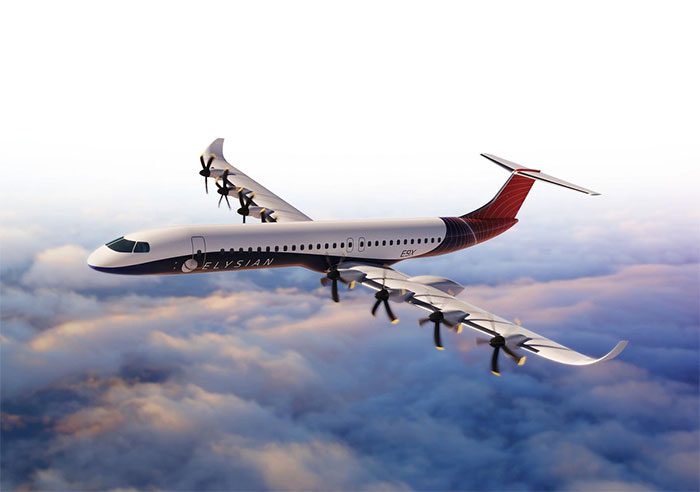The Dutch startup Elysian plans to produce the E9X electric aircraft, which can accommodate 90 passengers and has a range of 805 kilometers, potentially reducing emissions by up to 90%.
According to CNN, the E9X electric aircraft is currently just a concept on paper; however, Elysian aims to have it in commercial operation within the next decade.
Elysian intends to build a scale model within the next two to three years and a full-size prototype by 2030.
Uniquely Designed Electric Aircraft

Design of the E9X electric aircraft – (Photo: ELYSIAN AIRCRAFT).
The E9X features eight propeller engines and a wingspan of nearly 138 feet (42 meters), larger than a Boeing 737 or Airbus A320. The fuselage will also be thinner.
According to Reynard de Vries, the design director and engineer at Elysian, this design will enhance both structural and aerodynamic properties.
This design stems from the collaboration between Elysian and Delft University of Technology, the oldest and largest technical university in the Netherlands. The aircraft design principles are outlined in the scientific study “A New Perspective on Battery-Powered Electric Aircraft”, authored by de Vries and Elysian co-founder Rob Wolleswinkel.
A key principle is that the batteries will be placed in the wings rather than the fuselage.
“This is an important design feature. The batteries account for a significant portion of the aircraft’s weight, and what you want to do with that weight is place it where it generates lift,” de Vries explains.
Fully Charged in 45 Minutes
According to de Vries, the battery technology won’t be a completely new breakthrough, but will build on existing technology, combined with advancements in batteries over the next 4-5 years.
Using such battery technology provides various possibilities for the aircraft’s range. Elysian aims for the aircraft to travel 500 miles (805 kilometers).
The design also indicates that the landing gear will be located in the wings rather than the fuselage, with the wingtips potentially folding to save space.
A backup power system based on a gas turbine could supply emergency power in case the aircraft needs to divert.
De Vries expects the E9X electric aircraft could reduce emissions by 75-90% compared to current narrow-body aircraft, accounting for the production of batteries and the energy used for charging.
The E9X is designed to be compatible with existing airport infrastructure without the need for adjustments or upgrades.
However, a significant challenge is that the aircraft’s turnaround time will be longer, as charging the batteries will take more time than refueling with conventional fuel. Elysian is targeting a maximum charging time of 45 minutes.


















































